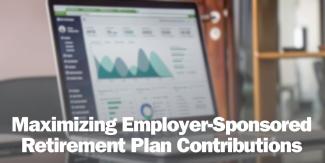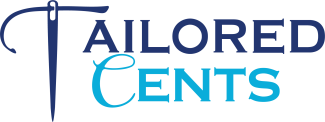
Maximizing Employer-Sponsored Retirement Plan Contributions
With benefits like immediate tax relief today and employer matches, employer-sponsored retirement plans, like 401(k)s, can be a relatively passive method of saving to a comfortable, secure retirement.
However, genuinely harnessing their power requires understanding their history nuances and how to leverage them among your other tax-advantaged accounts.
A Brief History of Employer-Sponsored Retirement Accounts
The concept of employer-sponsored retirement plans began in the late 1800s, primarily through defined benefit plans, commonly known as pensions.
These plans promised a specific monthly benefit upon retirement, usually based on salary and years of service.
The first corporate pension plan was established by the American Express Company in 1875, and by the 1920s, many large corporations had adopted similar plans.
Pensions became a standard benefit for many American workers through the 1940s and 1950s. The Social Security Act of 1935 also provided a foundation for retirement security.
The Employee Retirement Income Security Act (ERISA) was enacted in 1974 to regulate and ensure the security of pension plans, establish minimum standards for pension plans in private industry, and create the Pension Benefit Guaranty Corporation (PBGC) to insure pension benefits.
With pensions, employers would contribute to a pension fund, which was managed to ensure sufficient funds would be available to pay retirees their promised benefits. Employers or designated fund managers would oversee the investment and management of the pension fund to ensure it could meet its future obligations.
However, the tides began to change in the 1980s. The rising cost of maintaining pension plans, increased life expectancy, and changing job markets led employers to shift towards defined contribution plans like 401(k)s, transferring investment risk from employers to employees.
The Revenue Act of 1978 included a provision, Internal Revenue Code Section 401(k), that allowed employees to defer compensation on a pre-tax basis to a 401(k) plan. Still, it wasn’t until 1981 that the IRS issued guidelines for these plans, and they became widely adopted.
Today, defined contribution plans, particularly 401(k)s, are the primary retirement savings vehicles in the U.S.
While some companies still offer pensions, they are increasingly rare, and new employees are often directed to 401(k) plans instead.
Recent legislative changes, such as the SECURE Act of 2019 and SECURE Act 2.0 of 2022, have raised the age for required minimum distributions (RMDs) from retirement accounts from 70½ to 72 and increased contribution limits.
The Variety of Employer-Sponsored Retirement Plans Today
Variations of and alternatives to the 401(k) have evolved throughout the needs to address the needs of a nuanced workforce.
403(b) plans are typically available to employees of public schools, non-profit organizations, and certain religious institutions. These tax-advantaged retirement savings have identical contribution limits to 401(k) plans. Some long-term employees (15+ years) in 403(b) plans may be eligible for an additional catch-up contribution of up to $3,000 per year, subject to a lifetime limit of $15,000.
457 plans are available to state and local government employees and non-profit organizations. They offer a unique catch-up contribution feature, allowing participants to contribute up to twice the annual limit in the three years leading up to retirement age, known as the "final three-year catch-up.”
Thrift Savings Plan (TSP) is a retirement savings plan for federal employees and members of the uniformed services. It mirrors 401(k) plans regarding contribution limits and tax advantages. The standard limit is $23,000 for individuals under 50 and $30,500 for those 50 and older, including a $7,500 catch-up contribution.
The "final three-year catch-up" for 457 plans can allow contributions up to $46,000 if the employee is within three years of normal retirement age.
Simple IRA (Savings Incentive Match Plan for Employees) is designed for small businesses with 100 or fewer employees. Simple IRAs allow employees to contribute up to $15,500 in 2024, with an additional $3,500 catch-up contribution for those 50 and older. Employers must match employee contributions up to 3% of the employee’s salary or contribute 2% of each eligible employee's salary regardless of employee contributions.
The SEP IRA (Simplified Employee Pension) is ideal for self-employed individuals and small business owners, and it involves contributions made solely by the employer. Contributions can be up to 25% of an employee’s compensation, with a maximum limit of $66,000 in 2024.
Profit-sharing plans are plans where employers contribute a portion of the company’s profits to employee retirement accounts. The contribution limit is the lesser of 25% of the employee’s compensation or $66,000 in 2024.
Though not employer-sponsored, IRAs (Individual Retirement Accounts) are worth mentioning. You can open an IRA without employer involvement. For 2024, the contribution limit is $7,000, with an additional $1,000 catch-up contribution for those 50 and older.
IRAs typically offer a more comprehensive range of investment choices than 401(k) plans, including individual stocks, bonds, and mutual funds. They can be rolled over from different employers’ plans, providing greater flexibility if you change jobs.
Understanding Contribution Limits in 2024
401(k) plans are the most popular employer-sponsored retirement plan and are an incredibly effective way to build up your retirement funds due to employer match programs.
Play to the Limits
Maximizing your contributions boosts your retirement savings and reduces your taxable income.
401(k)s offer standard contribution limits of $23,000 for those under 50 and $30,500 for those 50 and older in 2024.
Grab the "Free Money"
Many employers offer a matching contribution to your retirement plan, often around 50 cents for every dollar you contribute, up to a certain percentage of your salary.
This is essentially free money that you don’t want to leave on the table.
To maximize this benefit, contribute at least enough to get the full match; for example, if your employer matches up to 6% of your salary, ensure you contribute at least that amount.
Employer matching contributions vary by company but typically involve matching a percentage of the employee's contribution up to a certain limit, often 3-6% of the employee's salary.
If you earn $200,000 a year and your employer offers a 50% match on your contributions up to 6% of your salary, your contribution of 6% would be $12,000. Your employer would add another $6,000, giving you a total contribution of $18,000 for the year.
The total combined contribution limit (employee plus employer contributions) for 401(k) plans in 2024 is $69,000 (or $76,500 for those aged 50 and older)
The Anatomy of a 401(k)
The shift to defined contribution plans like 401(k)s from pension plans is just one of the many textured retirement trends evolving over the past few decades.
Though they’re versatile, they come with a few factors worth considering.
Contributions to a 401(k) are made with pretax dollars, which lowers your taxable income for the year. For example, if you earn $200,000 and contribute $15,000 to your 401(k), you are only taxed on $185,000.
Your 401(k) investments grow without being taxed until you withdraw them during retirement, allowing your savings to compound more quickly over time.
When you retire and start taking distributions from your 401(k), the entire amount, including the employer match and any earnings, is taxed as ordinary income.
The 401(k) logic seems straightforward– get the tax break in your high-earning years and pay taxes on the money and growth when you retire with lower income due to the loss of salary.
However, for two reasons, you might not be in a lower tax bracket as anticipated.
Many retirees maintain a similar or even higher income level through various sources such as investments in real estate, other taxable investment accounts, high-interest savings accounts, and part-time work.
Second, future tax rates are uncertain, but higher rates may be possible due to changes in government policy or fiscal needs. For example, during the Eisenhower administration in the 1950s, the highest marginal tax rate was 91%, even in peacetime.
Paying taxes now at known rates might be more advantageous than throwing them into the unpredictable winds of tax legislation.
Diversify Within Your Plan: Using Pre-Tax and After-Tax Accounts
While stuffing your 401(k) is a great start, consider diversifying within your employer-sponsored plans.
Tax diversification involves spreading your retirement savings across accounts with different tax treatments to manage tax risk and maximize retirement income.
For example, using both 401(k) and Roth accounts can balance the benefits of tax-deferred and tax-free growth.
Many plans offer options like Roth 401(k)s, which allow after-tax contributions that grow tax-free. Though they don’t reduce your taxable income now, the investments grow tax-free, and withdrawals in retirement are also tax-free, provided certain conditions are met.
Diversifying contributions between pre-tax and after-tax accounts gives you a blend of hedging against future tax rate changes, withdrawal flexibility, and growth strategies.
Making Cents of Employer-Sponsored Retirement Plans
Maximizing your employer-sponsored retirement plans is just one step in designing a comfortable and stress-free retirement. Take things to the next level by pursuing some means of tax diversification and leveraging various tax-advantaged accounts, whether through your employer or self-directed.
Here’s how you can make the most out of your retirement plans:
Setting up automatic contributions from your paycheck ensures you consistently fund your retirement without having to think about it.
Many plans allow you to set a percentage of your salary or a fixed dollar amount to be diverted into your retirement account each pay period.
This "set it and forget it" approach can help you hit those annual limits effortlessly (IRS).
If you’ve maxed out your employer-sponsored plans, look into IRAs for additional tax-advantaged savings.
Look into Roths for the after-tax account advantages listed above. If you exceed the Roth IRA income limits, you can legally funnel considerable sums via the Backdoor Roth IRA conversion strategy using your 401(k).
Tax laws and contribution limits change, so it's essential to review your retirement strategy annually. Adjust your contributions to reflect new limits and consider increasing your savings rate whenever you get a raise.
Regular check-ins with a financial planner can ensure your strategy aligns with your retirement goals, current tax laws, and any potential trends on their radar.
Remember, retirement saving isn’t just about saving—it's about guaranteeing the retirement you envision by using every opportunity to let your money grow and work for you.
IRS Resources
- IRS Retirement Plans Home Page: IRS Retirement Plans
Contribution Limits: IRS Contribution Limits
